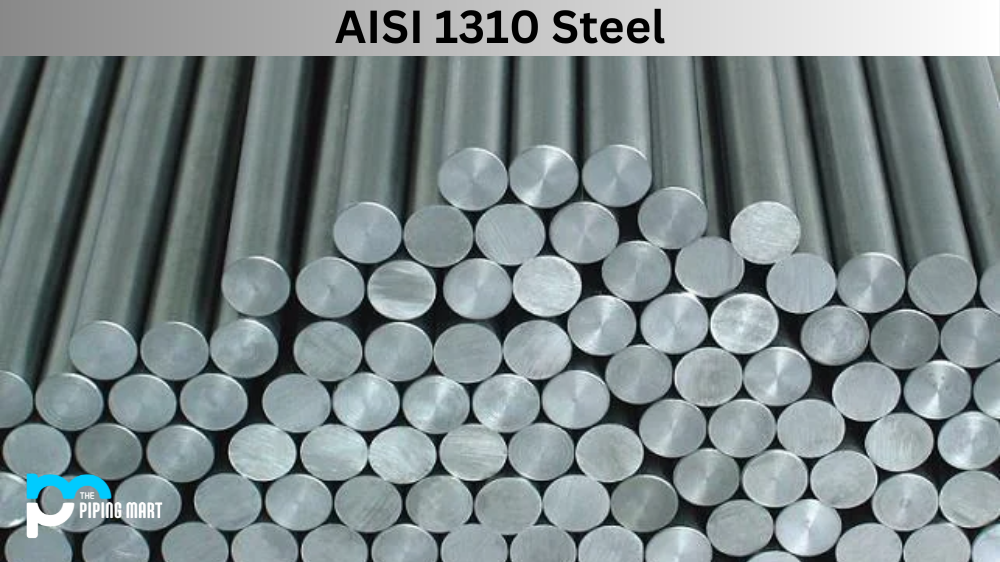Steel is vital in various aspects of our lives, from construction to transportation to manufacturing. However, different steel grades vary in composition and properties, ultimately affecting their application. One such steel is AISI 1330, a medium-carbon steel with outstanding mechanical and physical properties. This blog post sheds light on all you need to know about AISI 1330 steel, including its composition, properties, uses, corrosion resistance, heat treatment, machining, and welding.
What is AISI 1330?
AISI 1330 is an alloy steel with a carbon content of 0.28 to 0.33%, manganese content of 0.60 to 1.00%, and silicon content between 0.15 and 0.45%. It has excellent machinability, good ductility and high fatigue resistance making it ideal for parts that require intricate shapes or undergo high-cycle loads like gear shafts, rods, cams, etc.
SAE – AISI 1330 Composition
AISI 1330 is a medium-carbon steel containing significant amounts of manganese that range between 1.60-1.90%. The steel also consists of about 0.28-0.33% carbon, 0.035% maximum phosphorus, 0.04% maximum sulfur, and 0.15-0.35% silicon. Other elements in AISI 1330 steel include small amounts of copper, nickel, and chromium. The steel’s alloying elements make it suitable for various applications that require high strength, toughness, and wear resistance.
| Element | Content (%) |
|---|---|
| Iron, Fe | 97.35 – 97.97 |
| Manganese, Mn | 1.60 – 1.90 |
| Carbon, C | 0.280 – 0.330 |
| Silicon, Si | 0.15 – 0.35 |
| Sulfur, S | ≤ 0.040 |
| Phosphorous, P | ≤ 0.035 |
SAE – AISI 1330 Mechanical Properties
AISI 1330 steel has impressive mechanical properties, making it ideal for heavy-duty applications. The tensile strength of AISI 1330 ranges between 630-800 MPa, while the yield strength is around 425 MPa. The steel’s elongation at break is approximately 10%, and its Brinell hardness is between 220-260. AISI 1330 exhibits excellent toughness, low-temperature impact resistance, and good resistance to wear and fatigue.
| Properties | Metric | Imperial |
|---|---|---|
| Modulus of elasticity | 190-210 GPa | 29700-30458 ksi |
| Bulk modulus (typical for steel) | 140 GPa | 20300 ksi |
| Shear modulus (typical for steel) | 80 GPa | 11600 ksi |
| Poissons ratio | 0.27-0.30 | 0.27-0.30 |
| Hardness, Brinell (average) | 179 – 335 | 179 – 335 |
| Hardness, Knoop (converted from Brinell hardness) | 282 | 282 |
| Hardness, Rockwell B (converted from Brinell hardness) | 98 | 98 |
| Hardness, Rockwell C (converted from Brinell hardness) | 25 | 25 |
| Hardness, Vickers (converted from Brinell hardness) | 271 | 271 |
| Machinability (based on 100 machinability for AISI 1212 steel) | 55 | 55 |
SAE – AISI 1330 Physical Properties
Besides its mechanical properties, AISI 1330 steel also boasts remarkable physical properties. These properties include a density of approximately 7.85 g/cm³, a thermal conductivity of 51.9 W/mK, and a specific heat capacity of 0.49 J/g°C. The steel has a melting point of 1426°C and a boiling point of around 2793°C. These properties make AISI 1330 steel a highly sought-after material in various industries.
| Properties | Metric | Imperial |
|---|---|---|
| Density | 7.87 g/cc | 0.284 lb/in³ |
SAE – AISI 1330 Thermal Properties
| Properties | Metric | Imperial |
|---|---|---|
| Thermal expansion co-efficient (@20ºC/68ºF) | 11.5 µm/m°C | 6.39 µin/in°F |
| Thermal conductivity | 51.9 W/mK | 360 BTU in/hr.ft².°F |
SAE – AISI 1330 Equivalents
- DIN 1.1165
- JIS SCMn 2
- JIS SMn 1 H
- ASTM A322
- ASTM A331
- ASTM A519
- MIL SPEC MIL-S-16974
- SAE J404
- SAE J412
- SAE J770
SAE – AISI 1330 Uses
The unique combination of strength, toughness, and wear resistance makes AISI 1330 steel suitable for various applications. Steel is commonly used to manufacture gears, axles, crankshafts, and machine parts that require high strength and durability. It is also used to construct high-stress components such as bridges and buildings. AISI 1330 is also used in the oil and gas industry for drilling equipment and in the production of heavy-duty machines.
SAE – AISI 1330 Corrosion Resistance and Heat Treatment
AISI 1330 steel exhibits moderate corrosion resistance due to its medium carbon content. It responds well to heat treatment methods such as annealing, normalizing, quenching and tempering, which improves its strength and toughness.
SAE – AISI 1330 Machining
Machining of AISI 1330 is relatively easy, and it can be machined in various ways, including drilling, milling, turning, and grinding.
SAE – AISI 1330 Steel Welding
Additionally, AISI 1330 steel can be welded using various welding techniques, although preheating and post-weld heat treatment may be necessary to prevent cracking.
Conclusion:
AISI 1330 steel is a versatile material used in various industries due to its strength, toughness, and wear resistance. Its mechanical and physical properties make it ideal for heavy-duty applications, where durability and strength are essential. Its moderate corrosion resistance, heat treatment responses, and machinability make it an excellent choice for machining and welding. If you are considering AISI 1330 steel for your projects, it is crucial to ensure that you use the proper heat treatment and welding techniques to achieve the desired outcome.

Meet Bhavesh, a seasoned blogger with a wealth of knowledge and experience. From metal products manufacturing to retail, Bhavesh has a diverse background in various industries and is dedicated to sharing his insights and expertise with readers.




